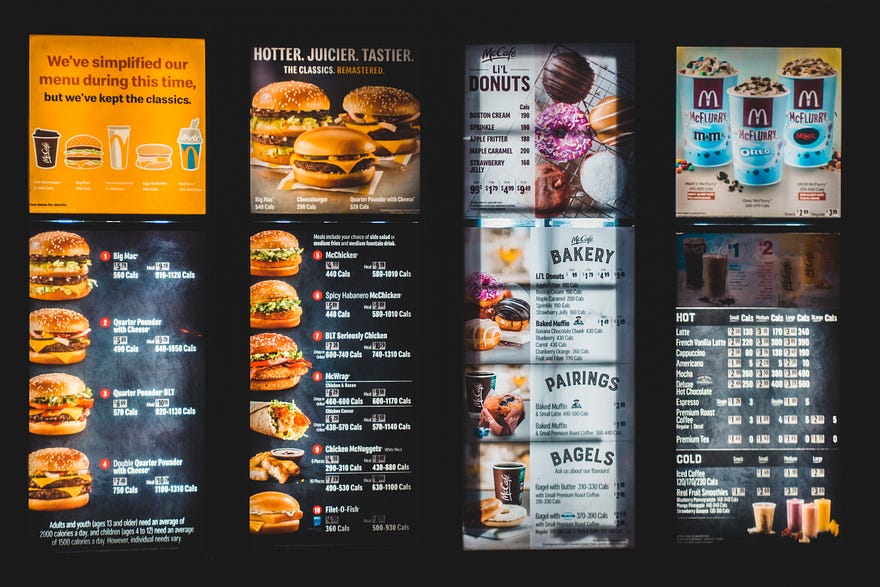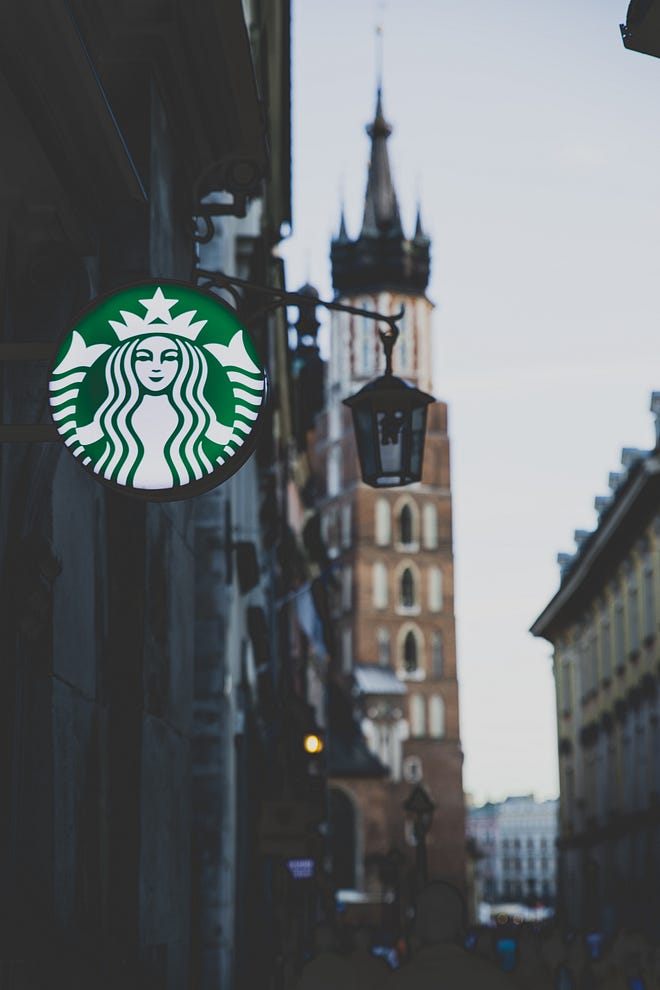And does it matter there aren’t that many?
“The problem with the French is that they don’t have a word for entrepreneur.” — President George W. Bush
Smartphones make our lives easier. The whole world is shown to us and mediate through the shiny screens that nearly all of us carry around. Ordering a taxi, discovering new music, staying in touch with friends or colleagues, and booking your next holiday is done quickly with a few taps. And a lot of money has been made making life easier.
The companies behind these technologies have become massive. They have grown from small start-up teams with only a good idea to private firms worth over $1bn. These are the unicorns. Some have become public and are now worth tens, if not hundreds, of billions of dollars.
Uber, Facebook, and Amazon all emerged in the age of the internet and are now worth over $1.5trn together. The smallest of that trio, Uber, alone is worth $55bn.
One thing, though, stands out. In the unicorn stable, only a few were bred in Europe.
Companies founded in the US since 2000 are now worth $1.37trn; in China, they’re worth $675bn. In Europe, that figure is only $240bn.
Europe is as large a market as both the US and China. There are more people in Europe than in the US and nearly as much money. It is not as simple as size. The true causes are historic and cultural as well as prosaic and regulatory.
One theory for the lack of European unicorns is that Europeans are just not as entrepreneurial as Americans or Chinese. They don’t have the ambition to create massive companies. That viewpoint is summed up by that famous (though probably fake) quote of President Bush. And it is a viewpoint that is wrong.
There are plenty of ambitious and talented people in Europe. It has traditionally been the birthplace of many big companies. On the Fortune 500, the list of the largest companies in the world, 160 were founded in Europe. Only 132 were American born. Traditionally, then, Europe hasn’t had a problem with producing ambitious individuals.
University campuses across the continent are full of students dreaming of founding great companies, shaping the world, making a difference. From Israel to Ireland there are entrepreneurs-in-waiting, fantasising of making it big, becoming the next Bill Gates or Elon Musk.
Musk himself isn’t even American. Many unicorn founders aren’t. Adam Neumann, the founder of WeWork, was born in Tel Aviv, Israel. Patrick and Joe Collison of Stripe came from Tipperary in Ireland. That’s only three. There is Russian Sergey Brin of Google, Ukrainian Jan Koum who set up WhatsApp, France’s Renaud Laplanche founded Lending Club, Mikkel Svane moved Zendesk from Denmark to the US after early funding gave it the money to do so. Zendesk is now an American unicorn, despite its start in Europe.
Silicon Valley attracts startups, whether they’re European or American. It has the conditions that founders are looking for. These founders don’t leave their countries to make it big somewhere else just because. They are coming to Silicon Valley for something.
Part of that is that many startups have found success there. It is where people with the skills that founders need gravitate to. It is a black hole, sucking in all those of building a unicorn. The talent pool is massive and it makes sense to start there. Success breeds success.
There are other reasons Silicon Valley provides a good environment for start-ups beyond the plentiful talent. There is a support structure for when things get tough, with lots of mentorship and advice from those that have gone through it before. That type of knowledge, concentrated in one area, is powerful.
London is the most successful startup hub in Europe. Of the roughly 70 European unicorns, 17 can be found in London, more than in any other one place. Many of the big ones, such as Monzo, Revolut, and TrasferWise, specialise in financial technology.
They are disrupting how money is stored, used, and moved around the globe. The talent they need to do this could only be found in London, one of the biggest financial centres in the world. Talent attracts talent.
Talent also attracts money. An investor looking at two different companies, everything else being equal, would lean to the one better placed to use its money. Unicorns chase growth, they burn money to grab a large part of the market and depend on scale for profitability. With the talent pool already in place in Silicon Valley, then they are better placed to burn that cash to reach a profit-making scale in Silicon Valley.
Investors want to be close to their investments. It makes more sense to base yourself in Silicon Valley or America than in Europe. The constant gossip of the Valley helps them find new startups to back. Flying to Europe all the time to hunt for new opportunities, to keep an eye or offer advice to a startup isn’t feasible. The money stays in Silicon Valley and is worked hard.
There is more money looking to invest in American startups as well. The success of previous unicorns has made some investors bolder, wanting to get on the next big thing before it takes off. Compared to a more conservative investing market in Europe, the US has around 14x the capital looking for a tech startup to invest in, according to Siraj Khaliq of Atomico, a European venture capital fund set up by Niklas Zennstrom, one of the co-founders of Skype.
With a much tighter financing market, European companies must focus on earning revenue quicker than their American counterparts. There isn’t as much money going around, and they have to make the most of what they have. Growth and potential are behind much of the valuation of US companies, but it can’t be such a focus for European ones.
This allows US competitors to snap up European companies before they can make it to the truly big time. Shazam was acquired by Apple in 2017 for $400m and has incorporated it as a key part of Apple Music.
Alphabet has gobbled up Belarussian AIMatter, which built a product that allowed users to transform images and videos in real-time. Booking.com, a Dutch startup, might have been worth around $50bn today, but it was acquired by Priceline, another American company, for $113m before it had the chance.
Supercell, the Finnish games company behind Clash of Clans, is owned by Chinese giant Tencent. Supercell was first acquired by SoftBank, the Japanese venture fund, for $1.5bn. After only three years, in 2016, it was sold to Tencent for $10.2bn.
European startups can make it big. Just it isn’t often throughout Europe. While the European Union has done a lot to bring the continent together, such as harmonise banking regulations that have made it easier for fintech firms like Revolut to access a large market, there are still national divides.
Zalando is a German online shopping platform worth more than $14bn. It is mainly active in the German-speaking part of Europe, Germany (of course), Switzerland and Austria. It has hardly made a mark outside its home territory.
A US company is just American, a Chinese firm is only Chinese, but a European one can be British, French, German or dozens of other nationalities. All countries that have historically not got along. National pride still acts as a barrier after regulations have been torn down.
There is one more factor to consider. What if American unicorns are being valued far higher than they should? That would mean that the sober European investors are better at pricing a company and not getting overhyped about a good idea that might not pan out.
There is some evidence for this. The recent IPOs of Uber and Lyft show that some valuations are overly optimistic. Uber went public in May with a share price of $45. It has slid to $32. It is a similar story with Lyft. It debuted at $72 and has declined to $50. The public markets are valuing these companies below what private investors were.
Even Slack, which had a well-received IPO, has taken a hit. Shares are trading at around $30, instead of the $38.50 they started at. Investors want to back the next Facebook or Google. They can fool themselves into thinking that the hyped private tech firm could be it. Each of these unicorns is unique — they are often the only big company with a similar idea (except for Lyft and Uber). If an investor thinks it is a good one, can work at scale and earn massive amounts of money, they are more likely to get involved. A look at the numbers behind a brand may dim that initial enthusiasm though. That’s could be what’s happening in a more risk-averse European market.
Europe has plenty of problems, though building unicorns isn’t one of them. There are plenty of exciting tech companies in the Old World, but the unbridled enthusiasm of the States is not present. There may be less eye-catching headlines, but it makes for a more stable market. There are as many European unicorns as there should be.

























